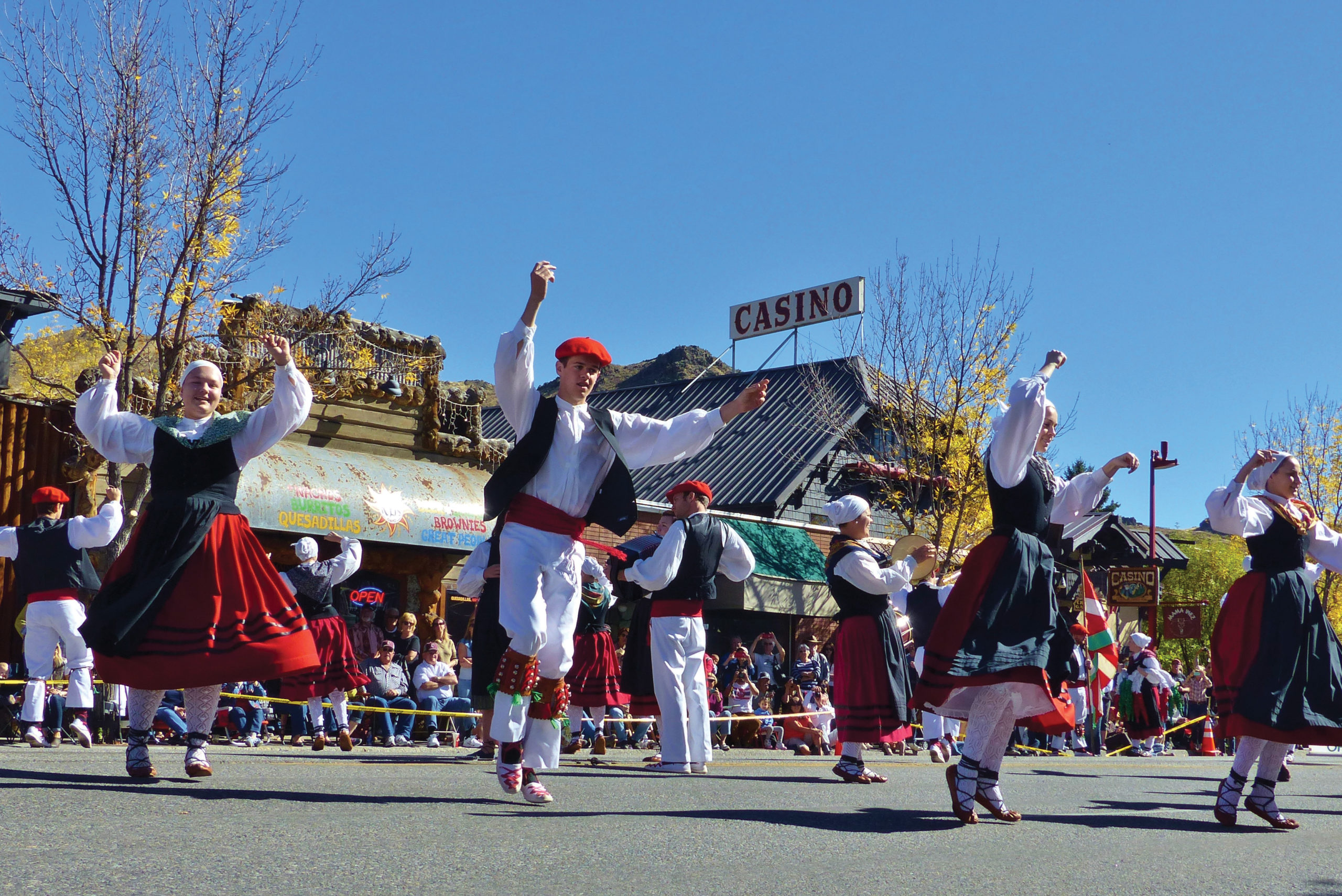On his 23rd birthday, Basque sheepherder Alberto Uranga found himself holed up with his dogs in a tent, crying as he wondered where the sheep he had been tending had disappeared in a blizzard near Baker Lake.
“Sheepherding in 1968 was tough—tough and very, very, very lonely,” said Uranga, who eventually found his sheep taking cover on the other side of the hill.
That’s why Uranga, now a Ketchum investment strategist, was so surprised—and proud—to see the Trailing of the Sheep Festival originate 25 years ago.
“They are preserving the history of the sheep. We finally got recognized,” he said in the thick Basque brogue he brought to America with him from the Old Country.
The five-day Trailing of the Sheep Festival, held October 6-10 this year, was created to educate newcomers, who were complaining about sheep running down the bike path, on the history of sheep in the Valley. In 1918, the Wood River Valley boasted 2.65 million sheep—second in size only to Sydney, Australia—and the sheep industry has endured into the 21st century.
In 1996, Flat Top Sheep Company ranchers John and Diane Peavey invited people to help walk the sheep through the Valley. The sheep showed up late, after staying up for a midnight buffet of bunchgrass under a full moon. But when they did, they drew a following of schoolkids—and a lone protester—midway to Hailey.
The Peaveys and the Sun Valley/Ketchum Chamber banded together to create the Trailing of the Sheep Festival the following year, and its authentic uniqueness quickly became a darling among festivals throughout the United States. It has been tabbed “One of the Top Ten Fall Festivals in the World” by MSN.com, one of “Ten Amazing Fall Festivals Worth a Road Trip” by the Travel Channel; National Geographic’s “Top 7 Best Fall Festivals in the U.S.” and USA Today’s “Ten Best Fall Festivals in U.S.,” among others.
In 2019, it provided a $4.5 million economic impact to Sun Valley as it attracted visitors from 29 countries and 47 states, excluding Mississippi, Rhode Island and Delaware. Visitors have included a Welsh sheep farmer and young teenager who attended as part of the Make-a-Wish Foundation.
Festival organizers have worked hard to keep the Festival fresh each year. Navajo weavers came one year, demonstrating how Spider Woman interlaced sunlight with lightning on a loom of sky. Nepalese came another year, showing festival-goers how to make Nomad momos as they told of herding Pashmina goats—the source of luxurious fiber used in cashmere sweaters—on the top of the world. And another year, Basque dancers dressed in white leggings and red tams punctuated the air with swords while performing military dances.
Foodies learn how to cook dishes like African Lamb and Peanut Stew, while quilters learn how to create stained-glass felted scarves and other items out of wool.
Some of the top sheepdogs in the country find their paws full during the Sheepdog Trials as they try to corral feisty sheep that have spent their summers running free. But the stars of the show remain 1,500 struttin’ mutton parading down Ketchum’s Main Street. It’s a bonus when the woolly buggers ignore the priest who is telling them to “Go and be the best sheep you can be,” and they instead dart into alleyways, much to the amusement of the crowd.
“The Trailing is one of my favorite events,” says Carol Waller, who helped build the Festival as Chamber director. “My husband’s family emigrated here, working out of the Browning sheep camp in the Bellevue triangle. It’s always exciting to see the sheep running down the old railroad bed or back streets of Hailey. The Festival helps us understand a sense of place.”
The 2021 Festival will feature expanded Sheepdog Trials, author Gretel Ehrlich, Peruvian ballet, and so much more. A Good Shepherd monument—a statue of a sheepherder and his horse watching over a band of sheep—will be dedicated at Roberta McKercher Park in Hailey.
One of the most important features of the Festival for the Peaveys is the storytelling throughout the weekend, including its “Sheep Tales Gathering” in Ketchum on Friday and the Folklife Fair in Hailey on Saturday, where sheep families, herders, longtime Idahoans and more are invited to a sheep camp to tell their stories. Steven Hatcher, Folk Arts Director for the Idaho Commission on the Arts, records four or five stories a day, allowing important time for remembering. He explained, “It is emotional for almost everyone.”
Earlier this year, all these recordings and stories were given to The Community Library in Ketchum and set aside as the Patricia Crandall Lane Trailing of the Sheep Festival Archives. “Stories of families that have grown the sheep industry are the legacy of the Trailing Festival and now they are available to the public to hear and read over and over again,” said Diane.
“Beyond all the fun and delicious tastes, music, dog trials and parades throughout the weekend, the stories of our lives and histories give lasting meaning to the weekend event and meaning to the landscape around us. And that matters for all of us,” Diane concluded. “After the Festival weekend and the music has stopped, and the food has been put away, we have our stories.”
The Peaveys look back at the Festival with a multitude of fond memories, including the year the CBS Sunday Morning show filmed it as an antidote for the sadness and anxiety that enveloped the country following 9/11.
“They wanted to show people the real world again,” said Diane. “And this is the real deal. But to think the Trailing is in its 25th year? It all seems surreal.”


